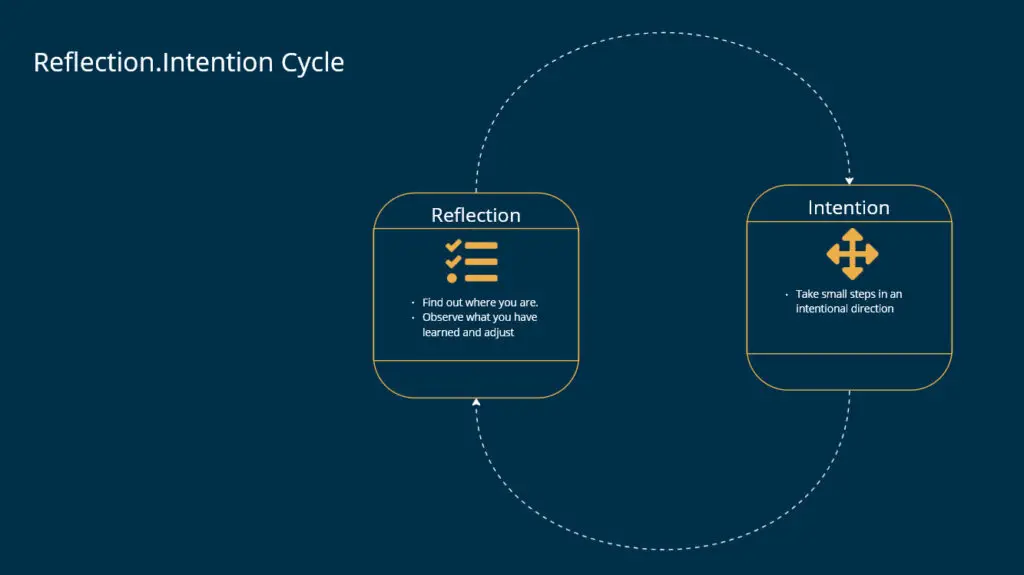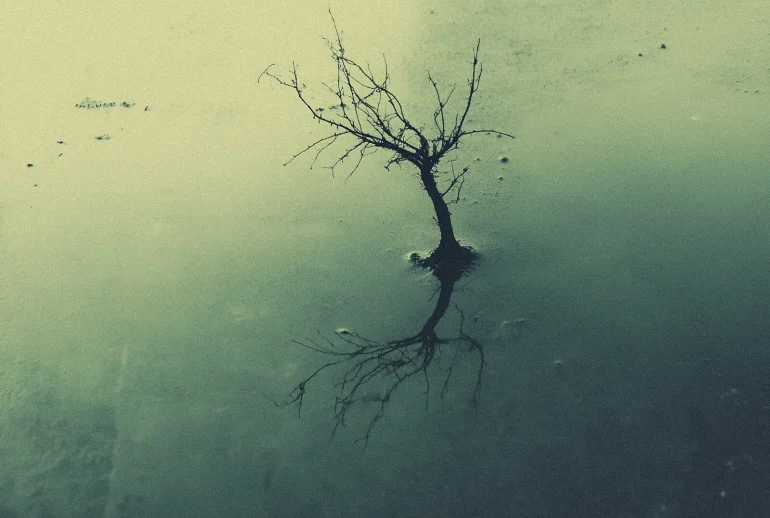When Reflection Gets Lost in the Creative Rush
It’s Sunday evening. Your mind’s racing with the week ahead. Projects remain unfinished. New ideas compete for your attention.
That creative project you were so inspired by last week?
Still buried under a pile of urgent, unfinished tasks.
You feel busy—maybe even overwhelmed—but are you moving forward with purpose?
Did the work you invested your energy into last week align with your intentions?
How would you know?
Most of the creatives I teach already know how to push hard and dedicate themselves to meaningful work.
What often gets overlooked is the need to pause—to step back and notice where you are and where you’re headed.
Over the years, I’ve developed a practice that helps align creativity, work ethic, and inspiration into focused, intentional growth.
I call it the Reflection–Intention cycle, and it’s helped me—and many creatives I teach—find greater clarity, confidence, and direction in their work.
Let’s dive in.
Before we can act with intention, we need to understand where we are. That’s where structured reflection comes in.
Why Creative Minds Need Structured Reflection
In a rapidly changing world, creative work is one of the few ways we can meaningfully navigate uncertainty. But when we’re surrounded by “wicked” environments—those messy, evolving challenges with no clear answers—it’s easy to default to just keeping our heads down and working harder.
The risk? Realizing too late that we’ve been heading in the wrong direction.
Reflection helps prevent this. Without it, we fall into familiar traps:
- Jumping between ideas without learning from what came before
- Mistaking motion for progress—staying busy without clear outcomes
- Repeating creative missteps without noticing
These behaviors aren’t just inefficient. Over time, they chip away at creative confidence and clarity.
Taking a more agile approach begins with pausing to understand where you are.
Structured reflection gives you a feedback loop—a way to evaluate what’s working, spot what’s not, and adapt to the changes around you without losing momentum.

How to Practice Weekly Reflection
The Reflection-Intention cycle draws inspiration from Dave Thomas’s approach to agility1:
Find out where you are.
Take small steps in an intentional direction.
Observe what you have learned and adjust.
Repeat.
Weekly reflection focuses on the first and third steps: locating yourself in the creative process, and learning from your recent experiences.
Reflection creates space to notice patterns, collect insights, and recognize learning that would otherwise stay hidden.
Here’s a simple structure that makes weekly reflection both effective and sustainable:
1. Gather Your Artifacts (5 minutes)
Start by collecting a few representative snapshots of your past week:
- Notes and journals: Scan through what you’ve written
- Calendar: Review how you spent your time
- Project files: Glance at what you worked on
- Communication: Skim key messages or conversations
Don’t aim for perfection or being comprehensive when you first start. The practice will grow over time, but trying to track or remember every detail of your week will create overwhelm.
Consistency is more important than completeness for now.
2. Notice Patterns and Collect Insights (10 minutes)
With your materials in front of you, explore the following through free writing:
- Energy Flow: When did you experience flow? When did you feel resistance?
- Learning Edges: What surprised you? What challenged your assumptions?
- Intention Alignment: How closely did your actions align with your intentions? Where did you drift, and why?
- Recurring Obstacles: What external circumstances got in the way? What internal habits created friction?
- Small Wins: What progress did you make, even if it feels minor?
Write freely without judgment. The goal is awareness, not evaluation.
3. Distill Key Learnings (5 minutes)
To close the session, highlight actionable takeaways:
- What is the single most important thing you learned this week?
- What pattern, if changed, would most improve your creative practice?
- What resource or support would make the biggest difference next week?
These distilled learnings create the bridge to the Intention phase of the cycle.
Starting Your Weekly Reflection Practice
To make this habit sustainable, reduce friction and create clear signals that it’s time to reflect:
- Pick a consistent time: Sunday evening or Monday morning works well for many creatives. Commit to it by putting it on your calendar.
- Set a reflective environment: A familiar notebook, favorite pen, or quiet space can reinforce the habit.
- Start simple: Don’t aim for comprehensiveness for your first session; just start. Even 10 minutes of genuine reflection will yield more than an hour of forced analysis.
- Experiment over time: Let the practice grow based on curiosity and need. Add questions, activities, visual elements, or more comprehensive tracking if that interests you.
The most common pitfall? Turning reflection into self-criticism.
Remind yourself: the purpose is learning, not judging. Approach your creative patterns with the same curiosity you’d bring to an artistic problem.
If the week seems way off track and you feel guilt, shame, or frustration, just notice. Don’t suppress the emotions; use them to explore what you might adjust in order to feel more aligned or effective.
You’ll know the habit is working when insights begin surfacing naturally. Patterns emerge. Dots connect. You start seeing your creative week more clearly—not because you’re trying to but because you gave yourself space to.
From Reflection to Intention
Reflection without action becomes contemplation. That’s why this is just one half of the Reflection-Intention cycle.
The insights you gather become fuel for intentional direction. In the following article, we’ll explore how to transform these insights into decisions that guide creative action without killing spontaneity.
You’ll learn to set direction, not rigid plans—so you can stay adaptable while moving forward with purpose.
This week, give reflection a try.
Set aside 20 minutes to reflect. Notice what shifts when you take time to understand where you are in your creative process rather than where you think you should be.
That simple act of noticing? It’s the foundation of creative agility—the ability to move with purpose through an ever-changing landscape of ideas, projects, and possibilities.
It’s a small habit with a big payoff: greater clarity, sustainable momentum, and a creative path that evolves with you—not against you.
- GOTO Conferences. (2023, November 24). One Rule to Rule Them All • Pragmatic Dave Thomas • GOTO 2023. YouTube. https://www.youtube.com/watch?v=ug8XX2MpzEw ↩︎
